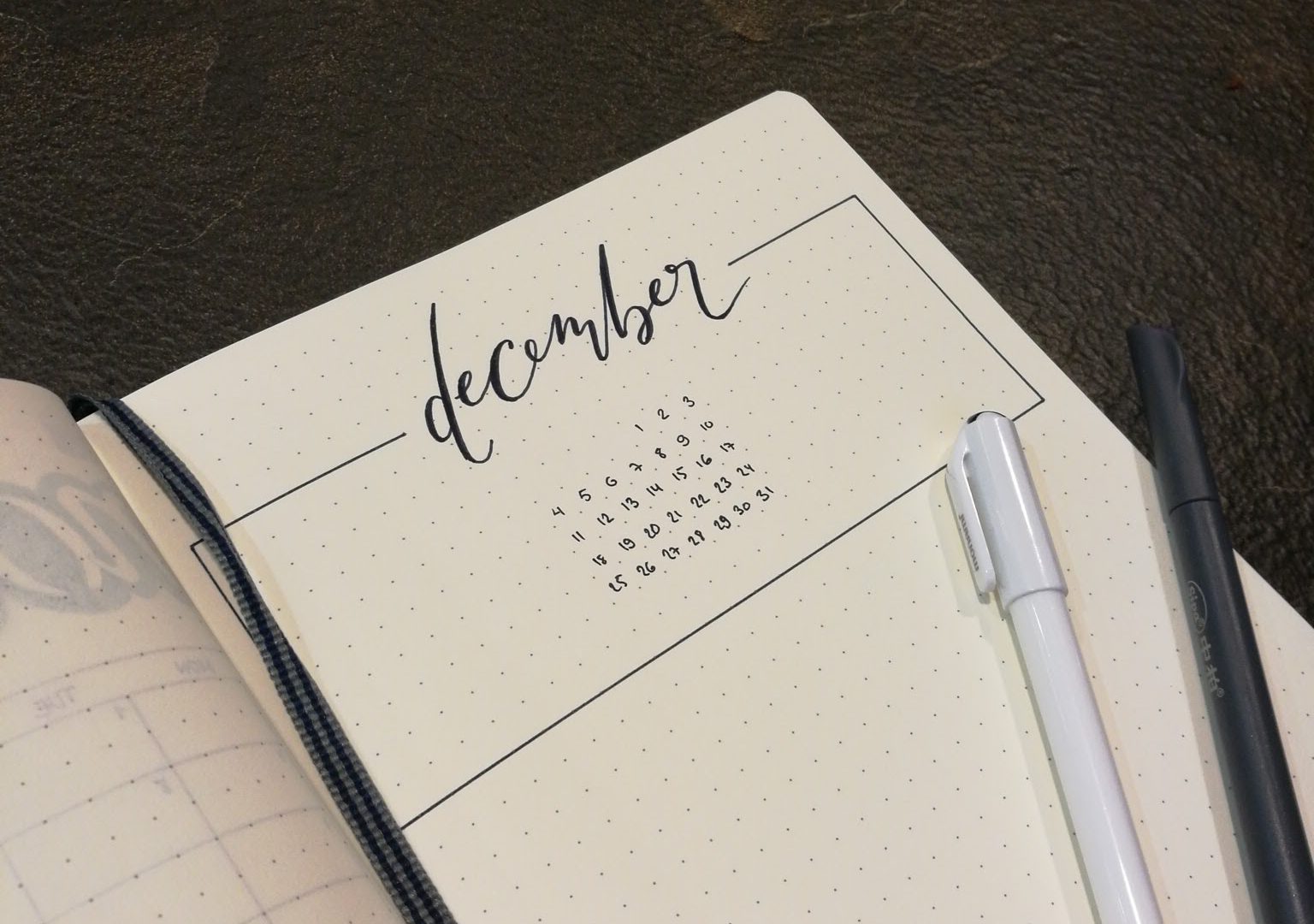My decades-long obsession with paper diaries ended a few years ago when I switched to digital productivity apps. But I’ve missed the simple satisfaction of putting pen to paper and mapping out your life on the page.
It turns out that I’m not alone.

Ryder Carroll, a Brooklyn-based designer, took the productivity world by storm in 2013 when he launched bullet journaling, a tool he created to remain organized without being limited to a preformatted planner template. “I wanted a device versatile enough to handle anything I threw at it and quick enough that it wouldn’t get in the way,” Carroll says in his bullet journal tutorial video.
Carroll’s method, which has been in development for more than 20 years, has become popular. You are not required to take my word for it. To see for yourself, use the hashtag #BuJo on Instagram. Fair warning: Be prepared to lose a significant amount of time if you fall into the rabbit hole of elaborate designs.
A Flexible and Customizable Approach to Life Tracking
Why has bullet journaling exploded in popularity?
It is the only analog product that combines careful preparation, reflective reflection, and self-expression. This enables users to remain structured in a minimalist manner while still cultivating a sense of mindfulness as part of their productivity routine.
Bullet journalers love it because it allows them to organize and document everything from their work schedules to their business analytics. Since bullet journaling is endlessly customizable, users build an infinite number of strategies and formats, including grids for:
- Habits tracking
- Meal preparation
- Financial objectives
- Lists of books to read
Unlike most planners, the method is suitable for tracking spontaneous thoughts that occur to you during the day, which has been shown to reduce anxiety (and distractions). Instead of categorizing each thought or turning it into an action plan, simply add it to your regular log and label it with a dash to indicate that it’s a notice. You can also index it if you need to quickly return to it.
The process of writing and editing a journal can be calming for some people. Studies have shown that writing has a clear positive association with health outcomes such as lower blood pressure, enhanced memory, and stronger immune function. Journaling is an important strategy in therapy for helping people express feelings, analyze their ideas, and tap into their imagination in order to use it more efficiently in all aspects of their life and work.
Many that use paper-based bullet journals extol the Stoic peace that comes from getting away from the screen to prepare your day and design your life. That is one of the reasons why the bullet journal is so famous. Furthermore, as any list-maker knows, ticking off to-do tasks as they are done provides deep satisfaction and a sense of control. As one writer put it, “the bullet journal is a catch-all for all that scratches your brain.”
A Closer Look at Bullet Journal: The Productivity Subculture
Bullet journalers are as dedicated as they come. Carroll’s tutorial video, which offers a simple introduction for beginners, has been viewed more than 7 million times since it was released in 2015.
Many that use the method are zealous about it, sharing new icons, formats, and styles with the bullet journal group or crowdfunding new journals that exemplify the #BuJo way. While many of the YouTube videos show women showcasing their designs, the bullet journal trend has also been adopted by men.
Instagram, in particular, is teeming with energy from bullet journal gurus and fans. Consider the most beautiful and practical journal layout possible, incorporate expert-style calligraphy, washi tape embellishments, and incredible drawings in the margins or header pages.
For others, part of the appeal is the act of beautifying and customizing the functionality of their journal. Others, on the other hand, find it repulsive. Looking at other people’s picture-perfect journals can be intimidating, particularly in the beginning.
One writer who did not join the movement said the learning curve was too steep:
“It was clear that bullet journaling was for people with a particular form of motivation and a commitment to living efficient lives,” she wrote. “In my own life, I went ahead and bought a pre-organized $7 planner.”
Others claim that the abundance of pretty Instagram feeds an “inaccessible aesthetic,” which feeds into a rising tide of perfectionism, guilt, and shame among millennials and high achievers. I’ve seen this detrimental dynamic firsthand with my clients, who are initially energized by the possibilities of their new practice but then feel increasing pressure to build a bullet journal that prioritizes Instagram-worthiness over utility in their lives.
Given all of the studies showing how harmful it is to equate oneself on social media, it’s no wonder that some people leave bullet journaling in favor of less fashionable alternatives.
Though bullet journaling does not need any special equipment (any old journal and pen will suffice), there is an entire market dedicated to bullet journalers. From high-end pens to rich paper stock and whimsical paper clips, you might spend all of your time (and money) buying journal upgrades rather than actually using them.
Despite these objections, legions of users have found ways to adapt and change their bullet journaling habits to suit their lives. The radical versatility of the bullet journal to “track the past, organize the present, and prepare for the future” (as described by Carroll) is why it was created in the first place.
Whether that method is a pleasurable one that requires a few hours of intense crafting per week or includes five minutes of scribbling notes at the start of the day, it is a choice that is central to Bullet Jornal’s task.
Bullet Journaling for Uncreative, Impatient People
Bullet journaling is far more than a glorified to-do list. It is breaking the code for making people happy and more efficient where other approaches (and practitioners such as doctors and personal trainers) have struggled. The rare mixture of pure pleasure, stimulating multiple senses, and externalizing thoughts seem to be what makes this approach so powerful — if you can stick with it.
Ryder Carroll, the inventor of the bullet journal system, had no idea the bullet journal method would spark a productivity craze. Many bullet journal users swear by the device for organizing and archiving their lives.
However, getting started with bullet journaling can be intimidating. Scrolling through Instagram photos of perfectly illustrated journals can be discouraging. Particularly if, like me, you consider yourself to be totally unartistic.
Carroll has a reminder for anyone who thinks they don’t have the expertise, time, or patience for Bullet Journal:
“Ignore what you see on the internet. It’s not about how it appears; it’s about how it feels and, most importantly, how well it performs for you.”
In other words, don’t be concerned if the handwriting resembles chicken scratch. You don’t have to practice calligraphy or stock up on all the supplies at the craft shop.
It also doesn’t matter if your journal is littered with strike points. That is, in reality, a sign that you are using bullet journaling as it was intended — as a single, ever-evolving lifelog to navigate the present and prepare for the future.
Bullet journaling is adaptable enough for the most harried productivity fans, and it can also supplement online resources. You just need 15 minutes, a pad, and a notebook to get started.
The basic building blocks of BuJo are explained below so you can start reaping its powerful benefits right away. We’ll also talk about how to overcome self-consciousness and keep the habit going.
Bullet Journaling for Beginners: 8 Steps to Getting Started
Step 1: Change Your Mindset
Your first notebook will be a learning journal. As with any production process, it will take time to find a bullet journaling flow and structure that works for you. Don’t over-optimize by purchasing a handmade leather journal. That’s a lot of pressure. Every artistic pursuit necessitates the surrender of perfection. Bullet journaling is no exception. Make a sloppy mess.
Step 2: Obtain a Journal and Writing Instruments
Start with a cheap notebook that you like but don’t mind making mistakes in or throwing away if it doesn’t work out. Choose a journal with blank pages (lined or unlined, your choice) over one with pre-existing parts to enable you to customize it. When it comes to writing equipment, I start with a pencil so that I can quickly erase it. But if you’re a die-hard ballpoint pen or gel pen fan, you’re on your own.
Step 3: Create an Index Page.
The Index serves as the foundation of your BuJo scheme. Consider it similar to a book’s table of contents. This will serve as a reference guide to help you locate specific parts or pages in your bullet journal.
Step 4: Make Logs
Logs are essential components of the bullet journal scheme. These are essentially places where you can drop tasks and projects you’re actually working on. It also serves as a repository for your long-term objectives.
Logs are classified into three types:
- A future log allows you to keep track of items that aren’t immediately on the radar. This is close to a someday/maybe list in terms of Getting Things Done (GTD).
- Calendars and classified target lists for the next 30 days are common features in monthly logs.
- To-do lists, meetings, and reminders can all be included in daily logs.
Keep your entries brief because simplicity is a key tenet of BuJo. As long as you can read the shorthand, “Write a draft of Chapter 1” or “Call Amy re-birthday plans” are appropriate.
Step 5: Choose Signifiers
Bullets are commonly used for task lists, circles for activities, and dashes for notes. Stars are widely used to indicate high-priority objects. Of course, all of this is adjustable, and over time, you’ll develop a system of uniquely your symbols. On a reference list, you can keep track of personal signifiers.
Step 6: Use Collections to Document Items
Collections are running lists that include everything you want to recall for later use:
Books you’d like to read Movies you’d like to watch Friends you’d like to reconnect with Things you’re thankful for Blog topics
Ideas
And a whole lot more. Since they don’t alter too much, these are usually held at the back of your notebook.
Step 7: Make It a Priority.
Plan a time to update your journal. After all, no productivity strategy works unless you put in the effort to make it work. Cross things off your daily and monthly records when you finish them. Update your Index and add page numbers to the bottom of each page. Many BuJo users conduct a monthly or quarterly summary, taking the time to focus on their accomplishments and potential goals and move items from one log to the next.
Step 8: Improve Gradually
You’ll eventually find a bullet journaling mechanism that fits your needs and preferences. If you’ve mastered the basic page layouts, you can move on to other aspects of process optimization. Perhaps you should focus on your handwriting. Alternatively, use washi tape to make it easier to locate often flipped-to pages. The creative BuJo group has developed a plethora of useful online tools.
Why Bullet Journals Work: The Psychology of Keeping a Journal
A bullet journal, according to neuroscientists, aids in the externalization of thoughts. Simply put, this creates more mental space, allowing you to think more easily and focus better. You don’t have to spend time recalling anything. Instead, your life is written down in your journal. You will now be more present and relaxed at the moment without thinking about missing anything.
Bullet journaling and other analog productivity approaches provide an additional benefit over digital tools: greater retention. Writing by hand activates multiple senses — visual, kinesthetic, and tactical — which aids in the retention of tasks. It also sends a message to your brain that your goals are significant, making you more likely to achieve them.
Bullet journaling is more effective psychologically than other paper-planning approaches since it also serves as a “life tracker”. It’s a place where you can look back on your successes and fond memories. According to research, taking time to self-reflect, appreciate what is going well, and build a vision for the future improves well-being.
Combining Bullet Journaling and Digital Tools
Fortunately, there are ways to reap the rewards of bullet journaling without giving up your favorite software resources.
- Before adding an idea to your notebook, use an online mind-mapping platform to brainstorm it.
- Add to your regular and monthly records by adding reminders and appointments to your digital calendar.
- Take meeting notes in your bullet journal, then take a screenshot or use dictation software to share them with teammates.
One essential function of the bullet journal is to provide a safe haven away from the glare of screens and the stench of social media. This peace of mind is a blessing in an age of information overload, where managing the whirlwind of assignments, demands, and data that comes your way is a hassle.
Remember the bullet journaling isn’t about being flawless or working mindlessly to keep busy. Fundamentally, BuJo — and the whole culture that surrounds it — is about seeking peace in the midst of chaos, concentrating on doing meaningful work, and designing your life on your own terms.
What could be more efficient than that?
Data analytics expert. As an analyst and project manager, I have proven to be a strong leader and team player in maintaining a suitable workspace for workers and industries in the oil and gas sector.
By taking into account various factors, with the assistance of state of the art technologies and the utilization of Big Data Analytics.
This includes considering various aspects like volume, velocity, variety, veracity, value together with complexity.
With the recent advent of data recording sensors in exploration, drilling, and production operations, oil and gas industry has become a massive data intensive industry.






